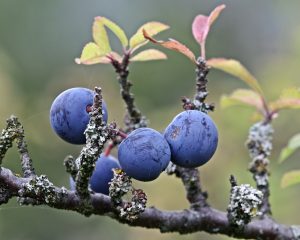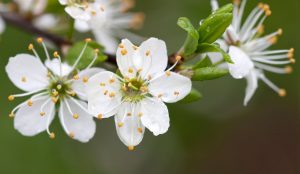Wild Prune – Prunus Spinosa


The Wild Prune is a thorny shrub with deciduous leaves, belonging to the botanical family of Rosaceae. The carriage of the Wild Prune is that of a bushy shrub , you can even intervene by potting, you can give it the form of a tree as the tree is long living, it lives over 60 years and can reach variable heights according to its environment and its form. Although being wild it has a trunk which is mostly irregular, sometimes twisted with a strong sucker activity at the base. Favored by an impressive root system stolon. The emission of pollen leaves marks on the vegetation which is impenetrable. It has a very strong wood used in carpentry to make small tools. The bark is dark grey, almost black. The branches initially reddish, are thin and very thorny, the thorns are prickly and acute, and sometimes form a tangle with the branches.
TERRAIN
For the cultivation of the thorny Prune a chalky fat, sandy or clay like soil is recommended. To obtain good results, you can by respecting all the demands of the above all regarding the humidity of the soil
FLORA AND FRUIT
The leaves are light green in colour, they are simple and alternate, the oval shape. The edges are serrate and have a stalk.
In Autumn It is very nice to observe the leaves before they fall they are strong yellow.
The prune is one of the first to flower in Spring. There are thousands of white flowers which already appear in March, even before the leaves, the flowers continue for the whole month of May. The PRUNE’S FLOWERS ARE HERMAPHRODITE AND HAVE A DIMENTION OF ABOUT 1-2 CMs.The wild prunes flowers are hermaphrodite and have a dimension of about 1 -2 cm. they are united in groups of three on the very short branches. These branches emit a delicate perfume which reminds us of honey. Blooming continues for the whole month of may. The colour and dimensions remind us of the Susino, it is a sphere shaped drupe. The peel is covered in a clear patina, its colour blueish, tending to black when nearing maturing You need to wait until mid Autumn of October until these are sweet and pleasant when freshly eaten.
USE AND HEALTH GIVING PROPERTIES
Today we still use the Wild Prune for it phyto-therapeutic qualities.. The parts used are the flowers and the mature fruit.
Both have laxative, diuretic, depurative , revitalizing and ant rabies properties.
The flowers should be collected in March, on dry days and left to dry in a shady place. With these flowers an excellent depurative herbal tea can be prepared with a draining function . The fruit picked in the middle of Autumn, better after a gel, when they lose the sourness. They are excellent laxatives, but you can also dry they with the dried berries,-discover popular traditions. The edible flowers, dunked in sugar and water are a delicious Spring break. Instead the dried flowers, you can use as a spice, in the preparation of sweets of all types.
We can’t do anything else, but give you an appointment during the Autumn months to come and collect a few frivolous recipes based on the Wild Prune.
